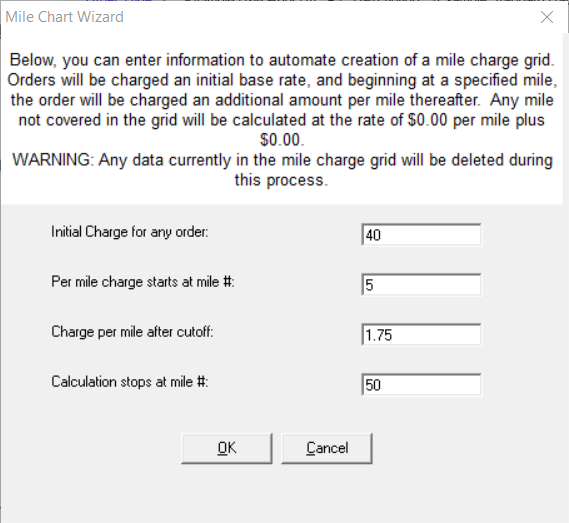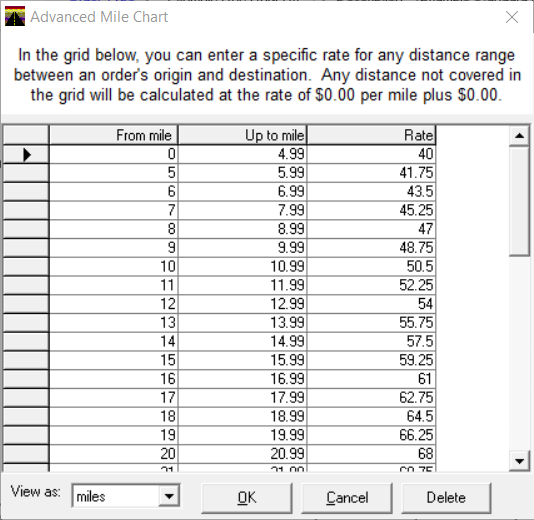Base Rate Charts - Distance Charges
The Mileage Charges tables allow you to configure distance breaks that will be based on the distance set up on the order. It is used with "Zones", "Weight", "Use custom stored procedure" or "Pieces" chart types only. You can configure distance breaks from when adding or editing base rate charts by clicking the Mile Chart Wizard button or the Advanced button.
Revert to dist charge must be checked. Use $0.00 if Revert to dist charge is not needed.
Mile Chart Wizard
The Mile Chart Wizard button opens the Mile Revert Wizard form where you can enter information to auto-populate the Mileage Charges table.
| Field Name | Description |
|---|---|
| Initial Charge for any order | The initial charge for an order. This value will also be added to the total after the per mile charge has been calculated. |
Per mile charge starts as mile # "Number of miles before extra charges" in X Dispatch 19.2 or older. | The number of miles that will be used only for the initial charges amount. |
| Charge per mile after cutoff | Amount to charge every mile after the number of miles that were entered in the Number of Mile before Extra charges field. |
Calculation stop at mile # "Maximum number of mile to calculate" in X Dispatch 19.2 or older. | The maximum number of miles you want the wizard to calculate. |
Example
The values entered in the image above means orders will have an initial charge of $40. Then starting at 5 miles an additional $1.75 will be charged per mile up to 50 miles.
Advanced Mile Chart
The Advanced Mile Chart button opens the Mileage table where you can enter the distance ranges and rate.
In X Dispatch 20.0 or newer, a warning icon will be displayed when there is data in the Advanced Mile Chart.
Quick Tip
You can change the distance range between miles and kilometers by changing the View as selection below the table.
Example
The values entered in the image above means orders will have an initial charge of $40. Then starting at 5 miles an additional $1.75 will be charged per mile up to 50 miles. This image is the result of using the wizard from the example above.


